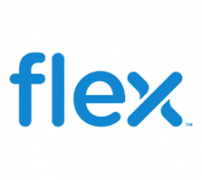Innovation and Artificial Intelligence are at the forefront of an energy revolution in the US. A thought leader in the US energy market has identified Artificial Intelligence, smart homes technology and solar tech innovation as key energy trends of 2017.
Vikas Desai is Senior Vice President and Global GM of Flex Living at Flextronics International. He notes that until 2017, new players in the energy space followed the model of traditional Silicon Valley tech companies, such as Nest; or financial institutions offering solar leasing or power purchase agreements, like Sunrun.
But 2017 saw a new maturity in the energy space, Mr Desai identifies, due to companies with long-term embedded energy expertise entering the market.
“GE, for instance, developed sensors that let wind turbines to talk to each other across the planet to make global wind energy forecasting possible for the first time. Electricity giant AES used AI to improve awareness of grid energy usage and make better predictions of how those systems operate.”
Solar market primed for exponential innovation
Mr Desai points out that 2017 saw a slow down in the US solar market. This was due to policy shifts and a maturing residential solar market in California.

But every cloud has a silver lining, and Mr Desai points out that the US solar industry is now ripe for a period of innovation. New and improved products will appear in the marketplace, and consumers will get better value as a result.
“The debut of Tesla’s PV-integrated Solar Roof is one example of how solar evolved this year,” Mr Desai states.
“This product’s high price point means it will likely stay out of reach for most consumers and this type of solar roof product has historically seen a relatively low rate of adoption overall. But it’s a sign that solar is becoming more differentiated.
“Another example of this is PowerPlay by Flex, which combines solar production with consumption awareness and the ability to control electric loads to help homeowners maximise their savings.”
Smart homes technology make more efficient energy use
The advent of smart home technologies like Amazon’s Alexa and Google Home gives us more control over the home environment, Mr Desai says. He cites room temperature as one area where energy could be used more efficiently.
But it’s now possible to control and direct energy more efficiently too. Energy systems can integrate with smart home platforms to make the most of cheaper electricity tariffs.
“A homeowner, for example, can shift the laundry room’s energy load to be aligned with the utility’s lowest rates,” Mr Desai explains.
“By providing this level of control, the smart home moves from mere awareness of energy use to the true optimisation of it.”












































